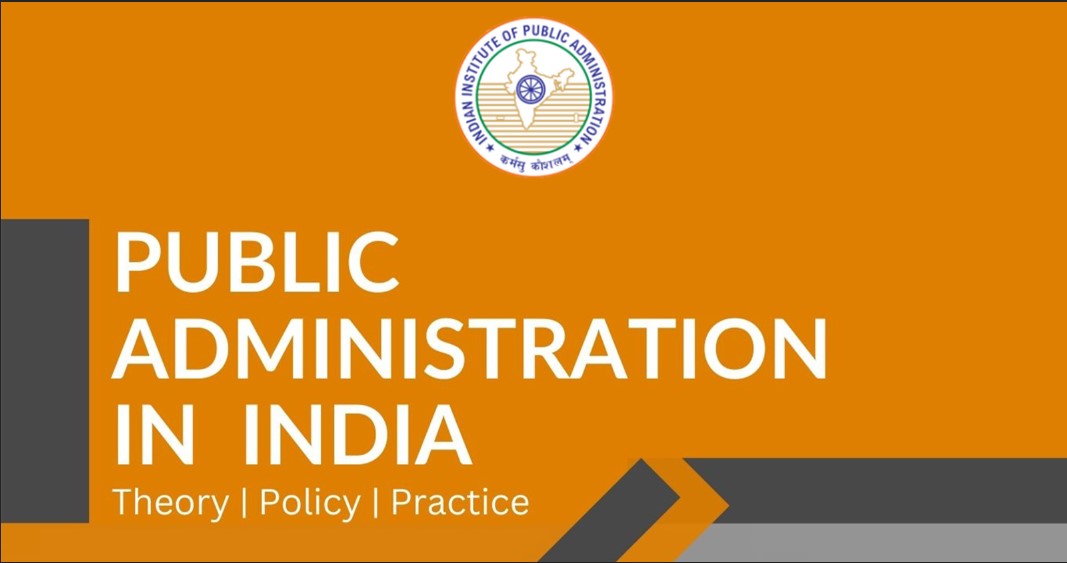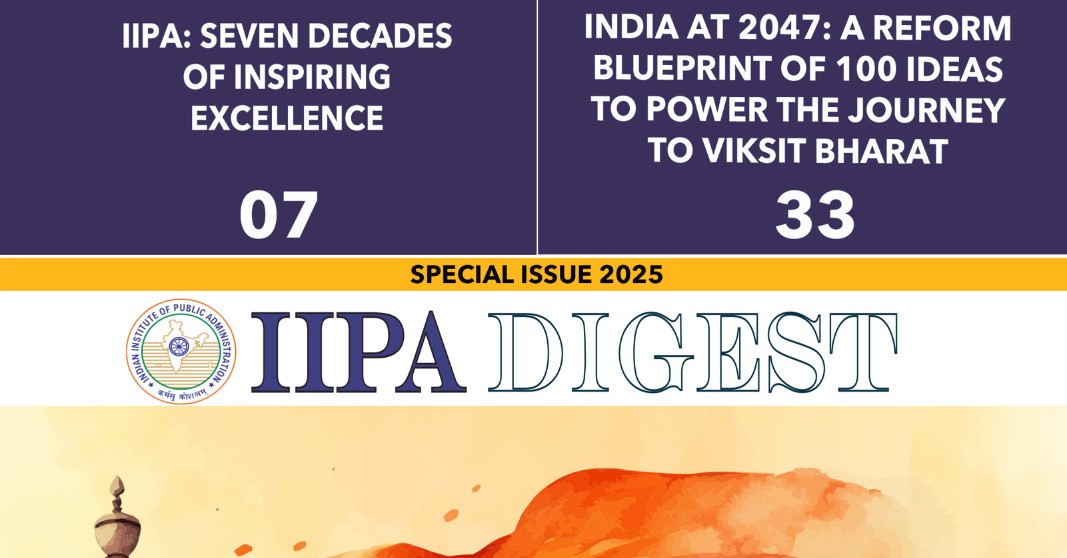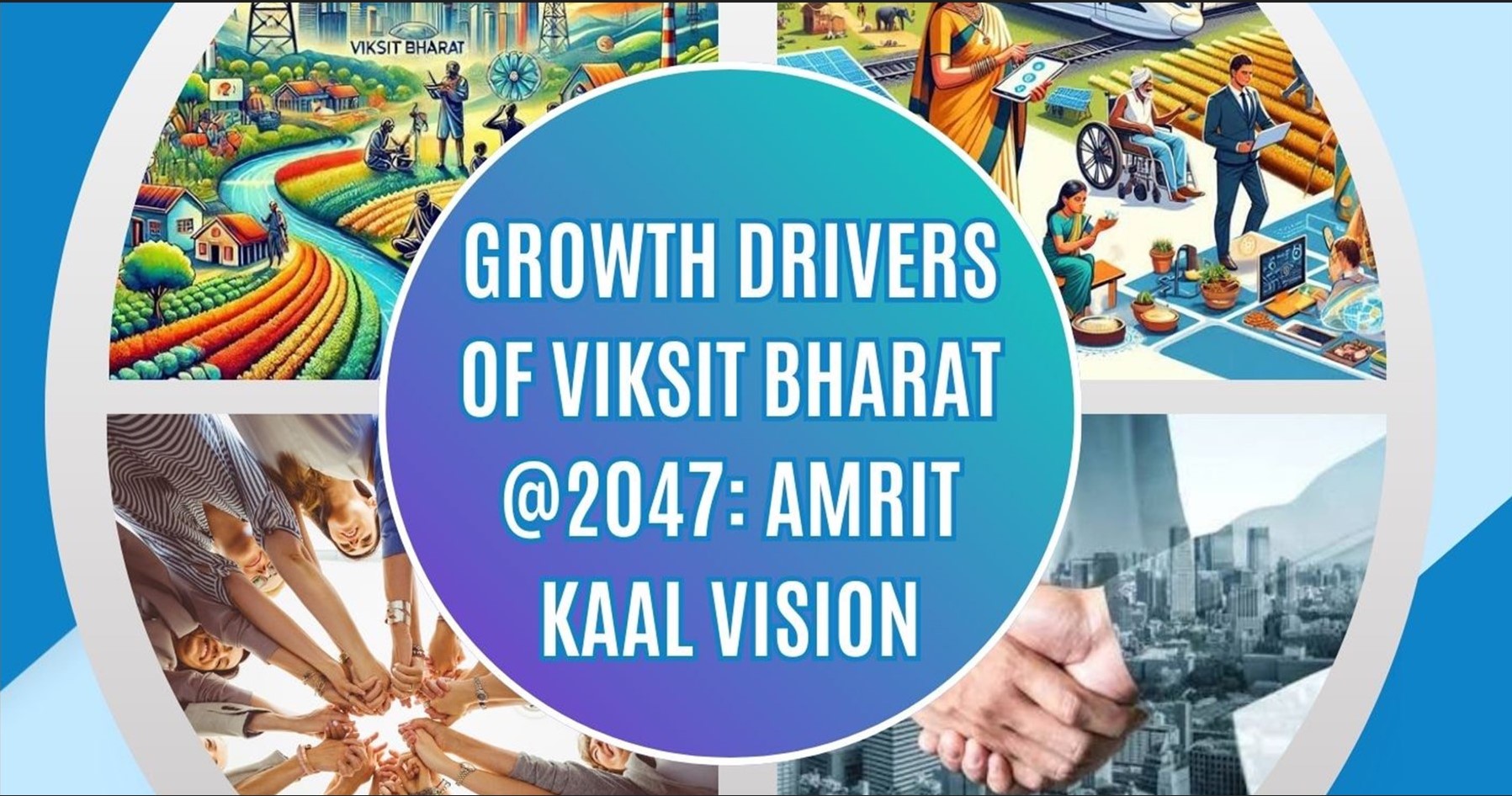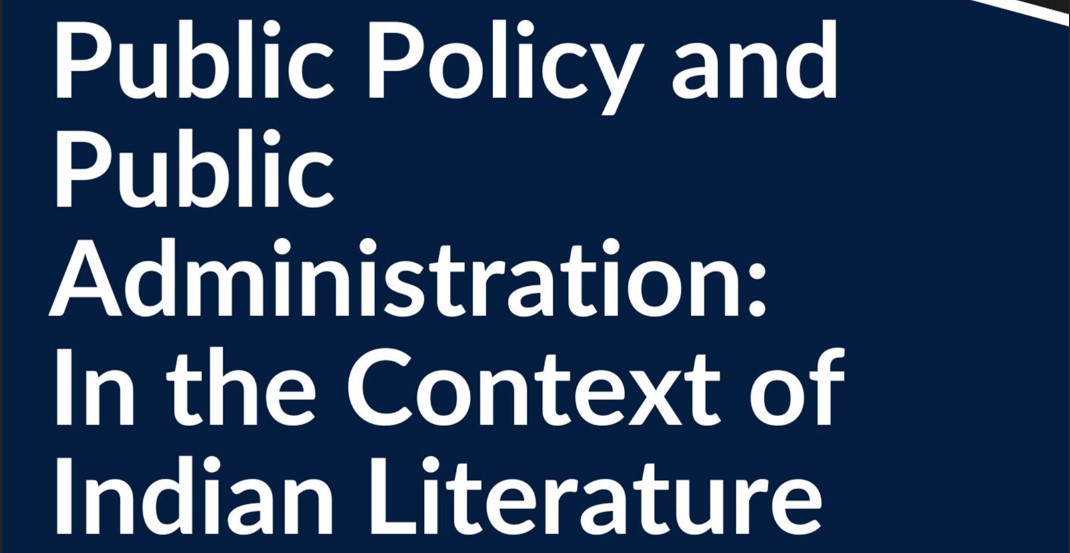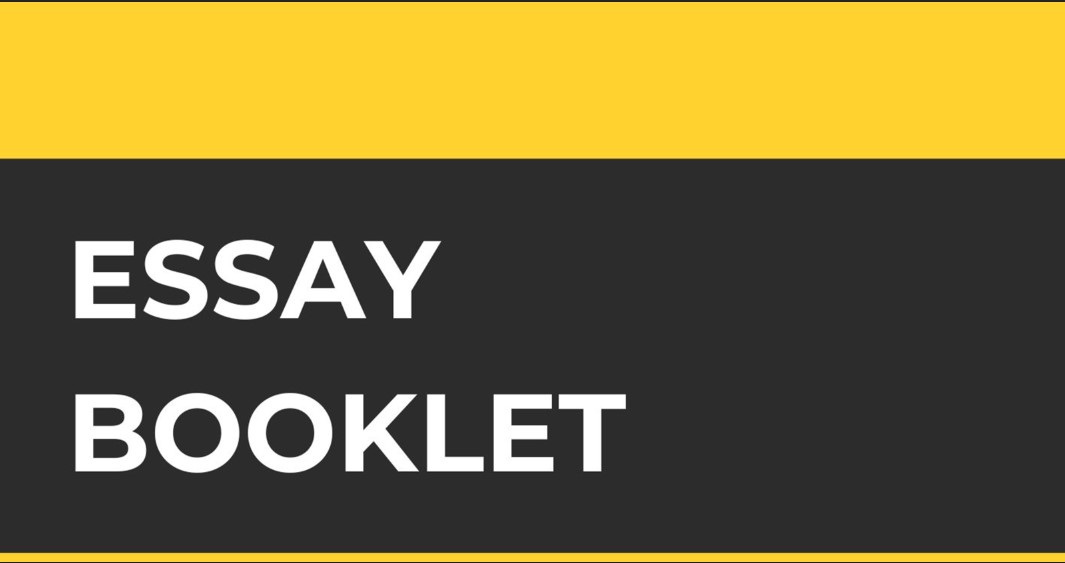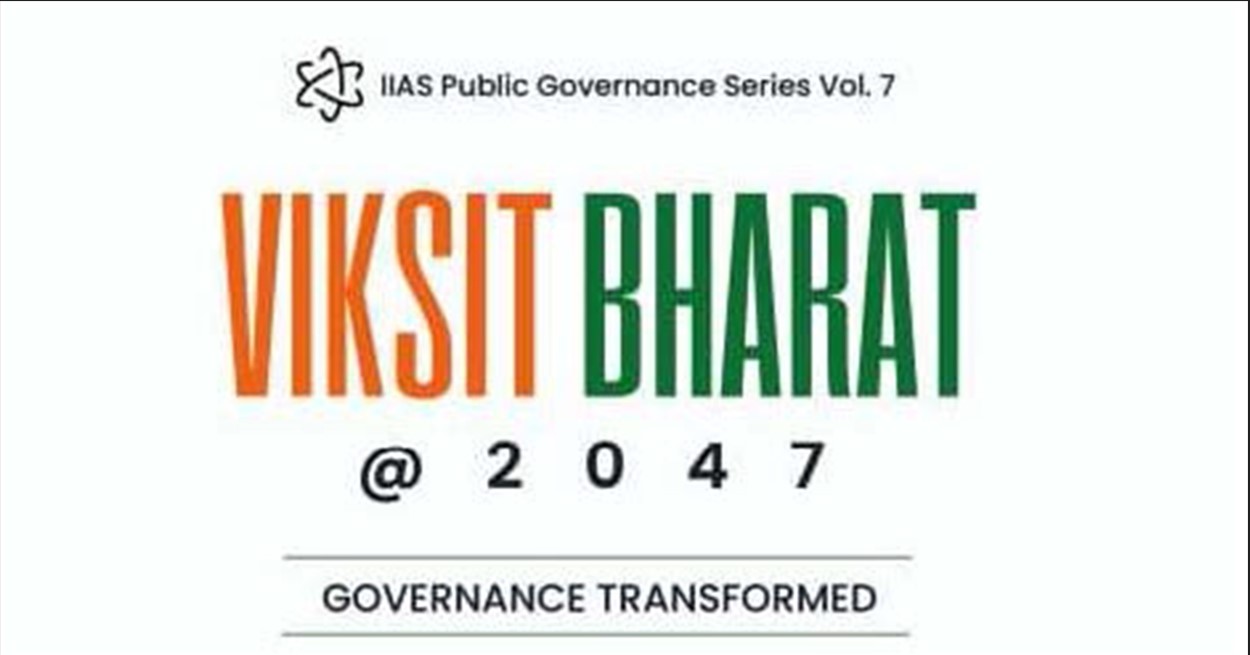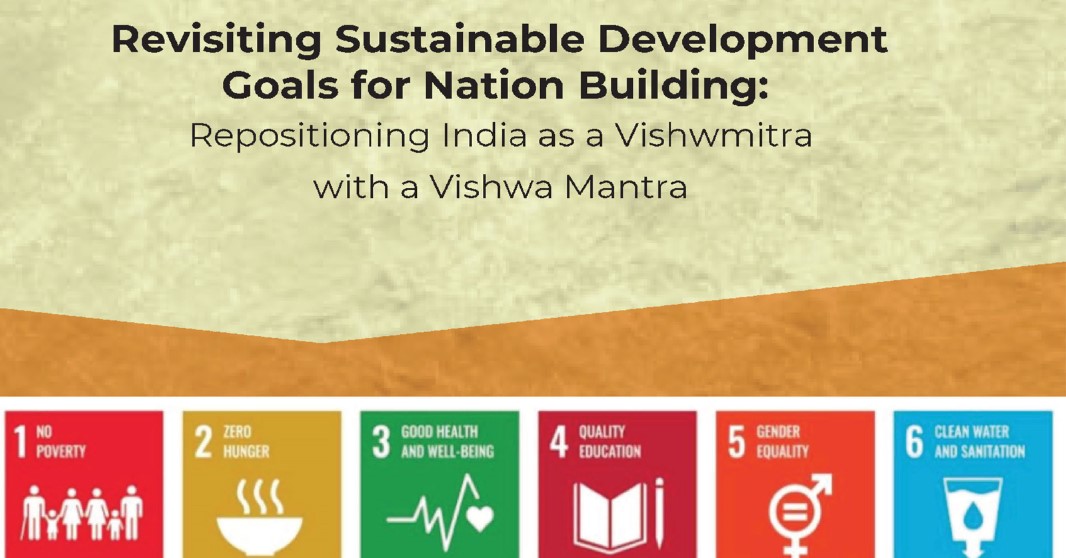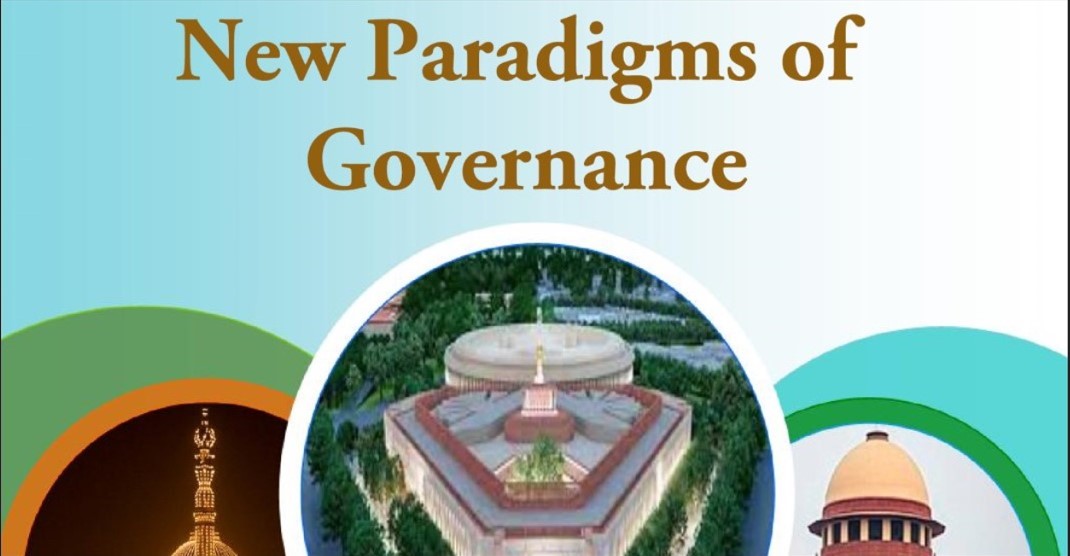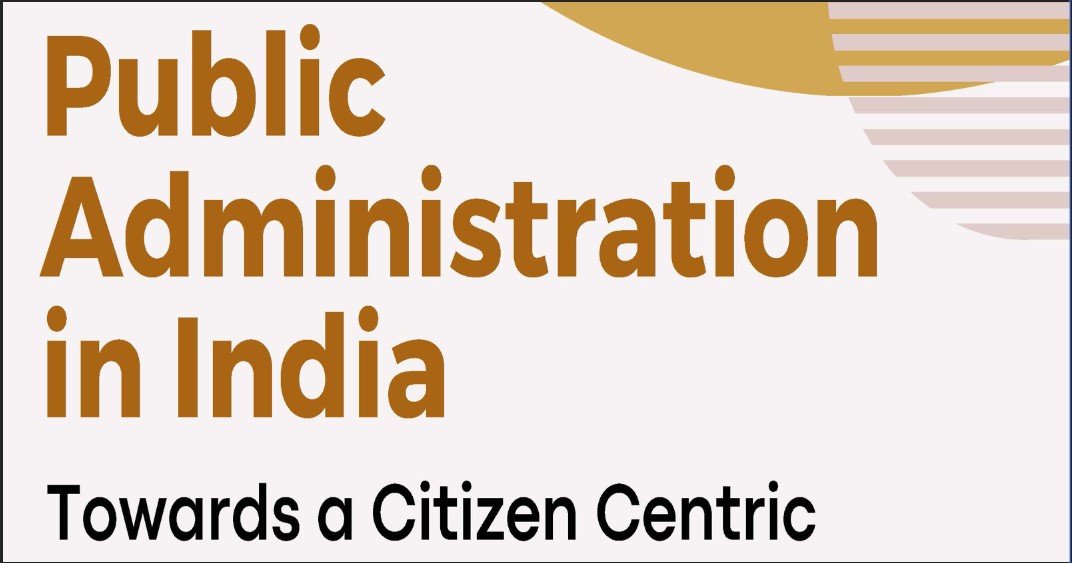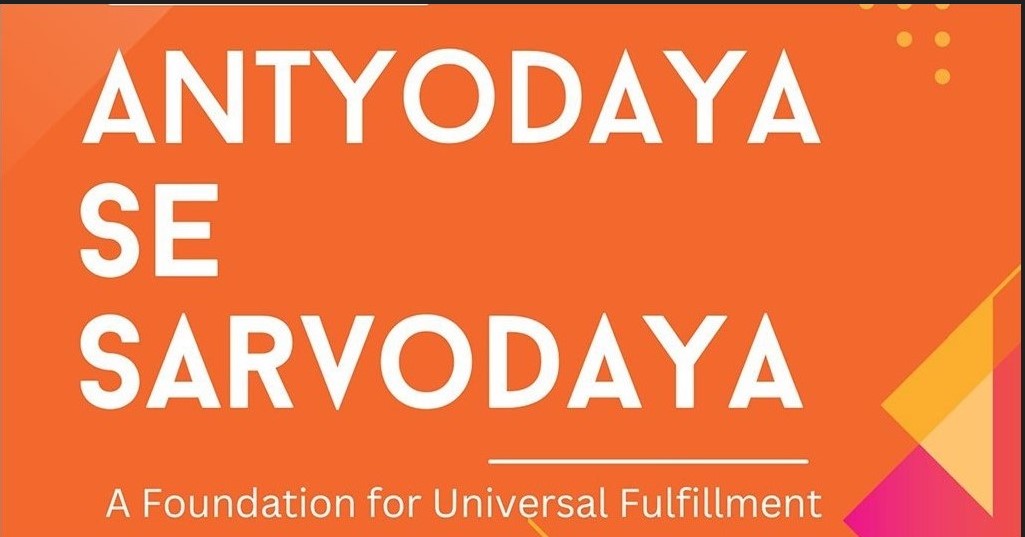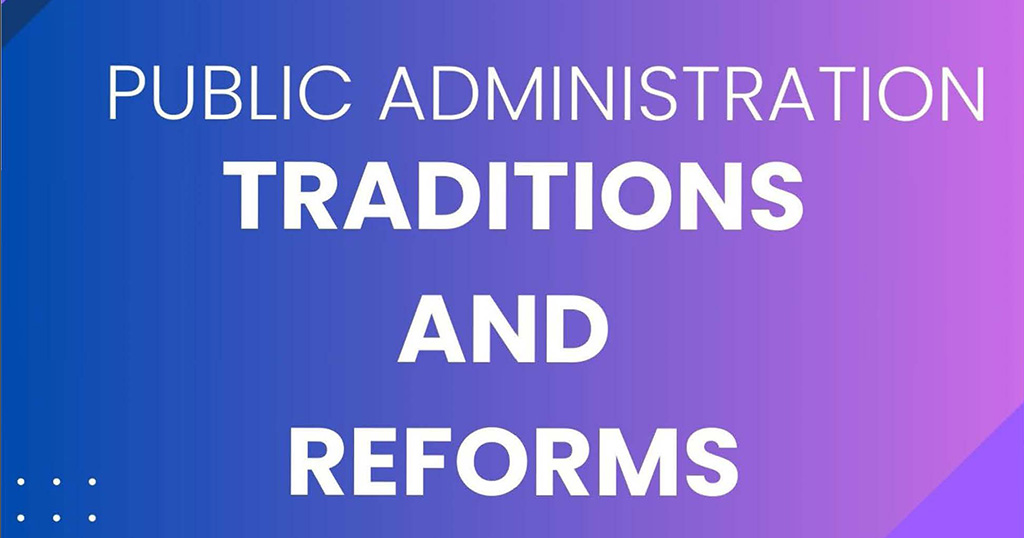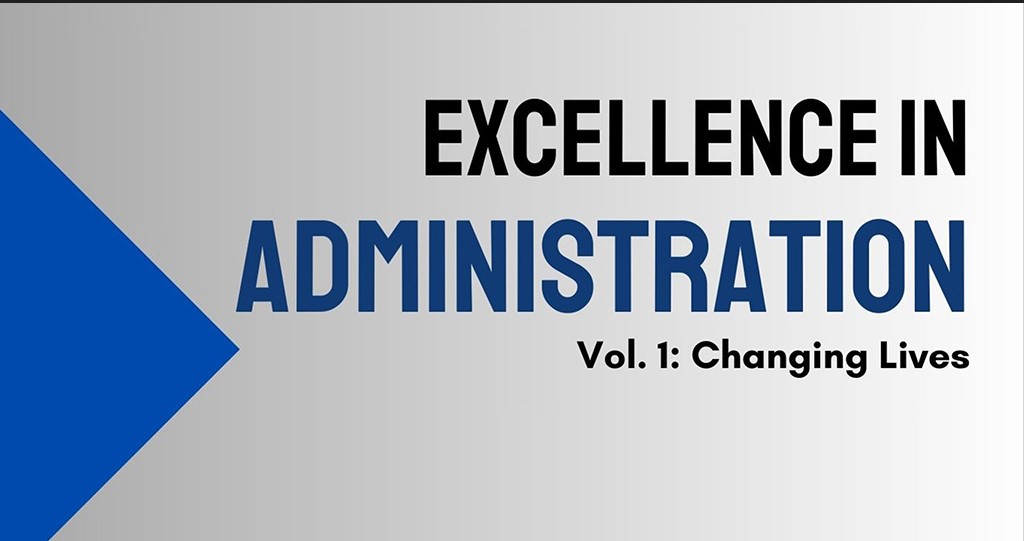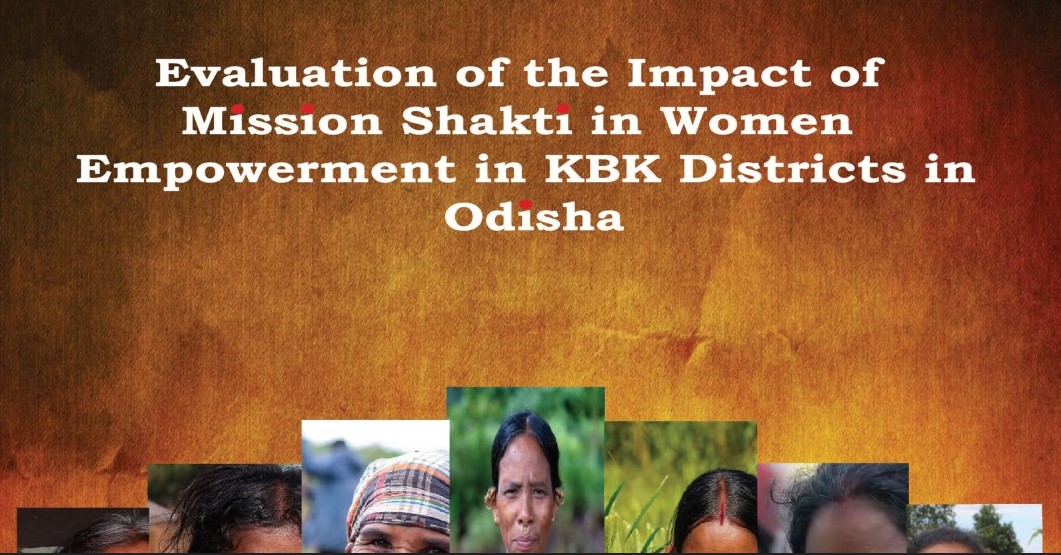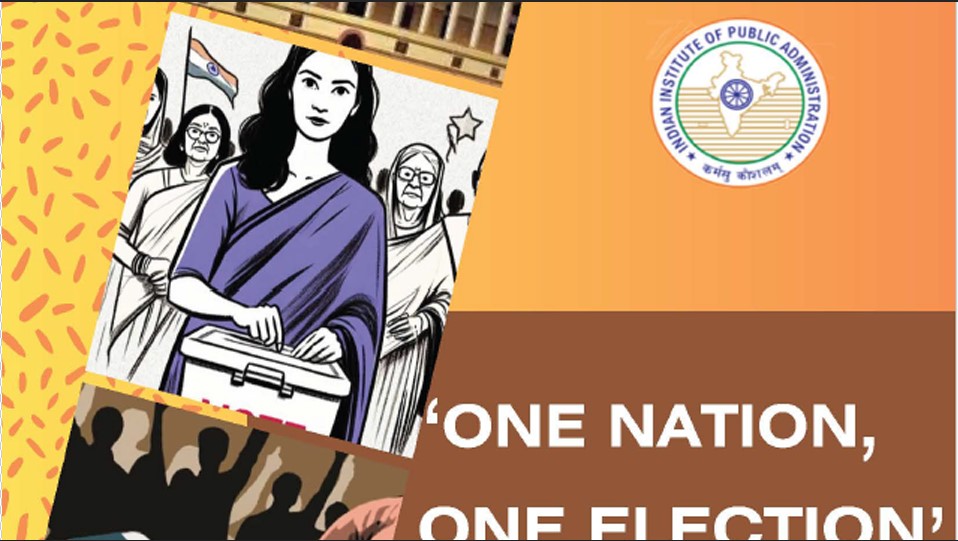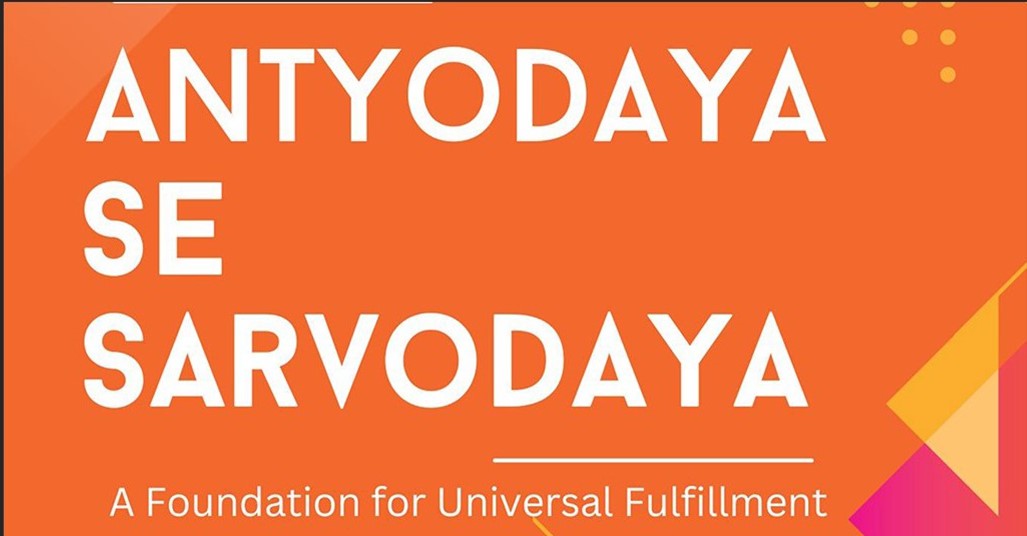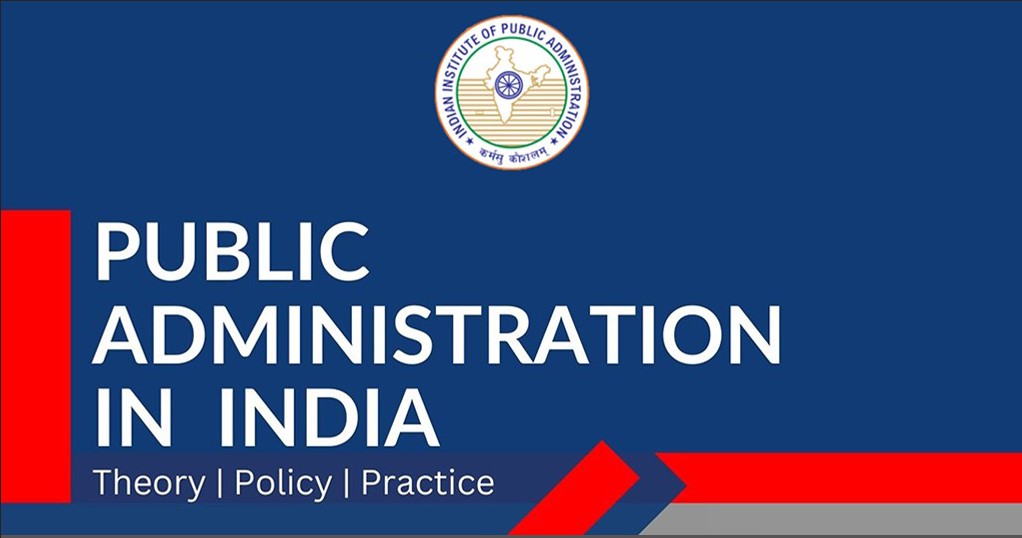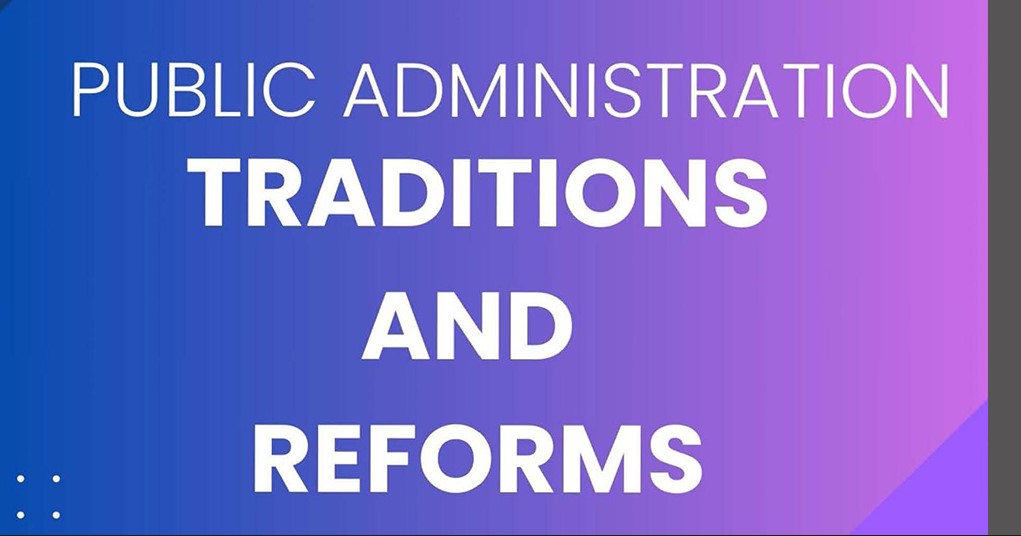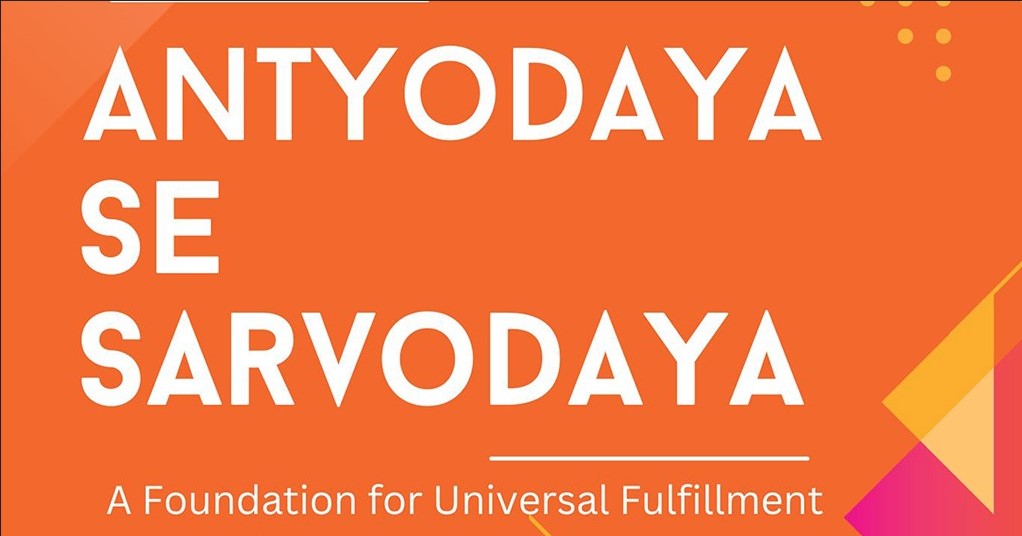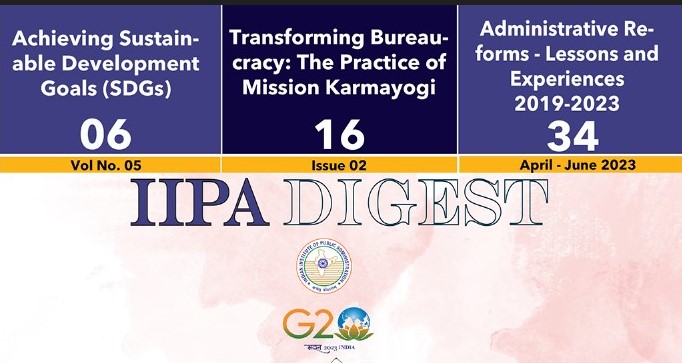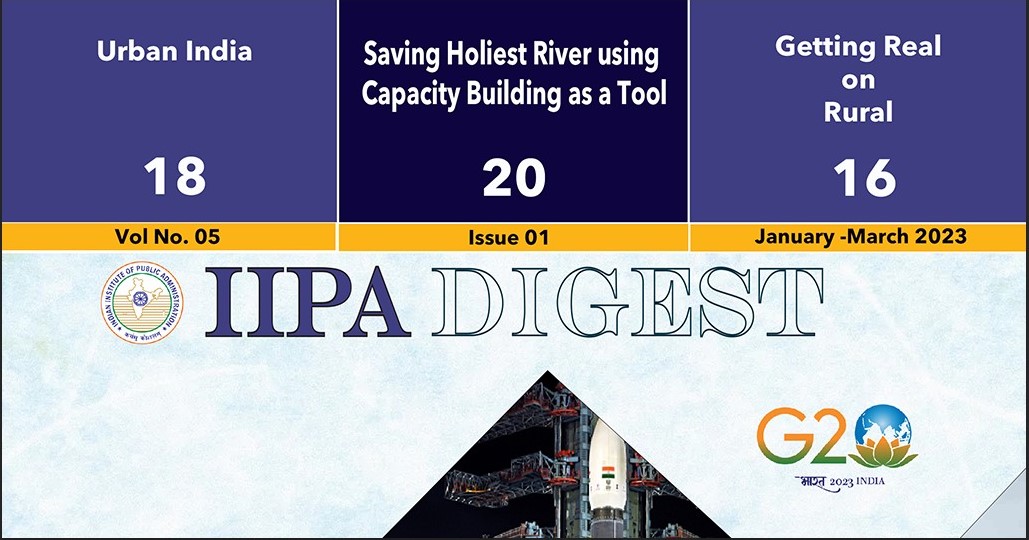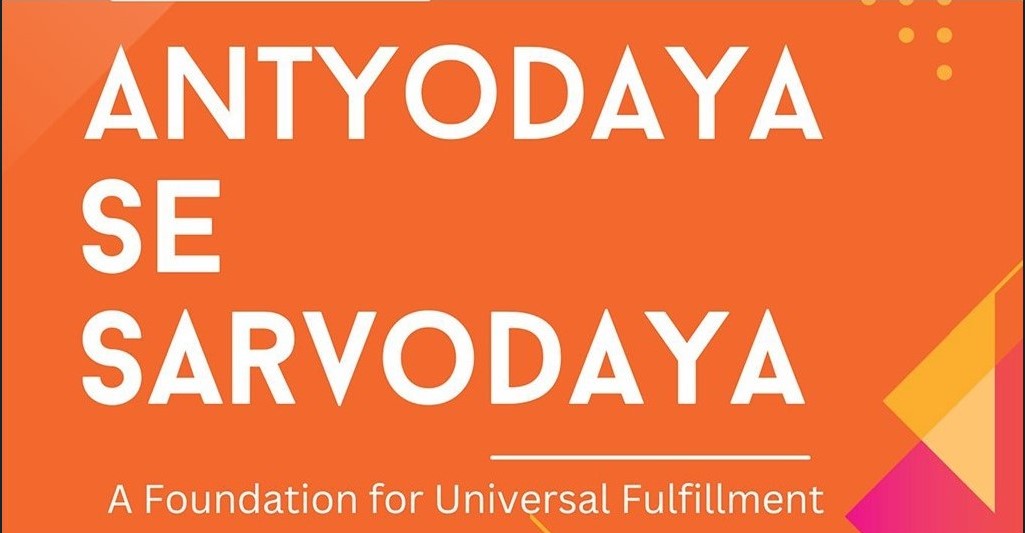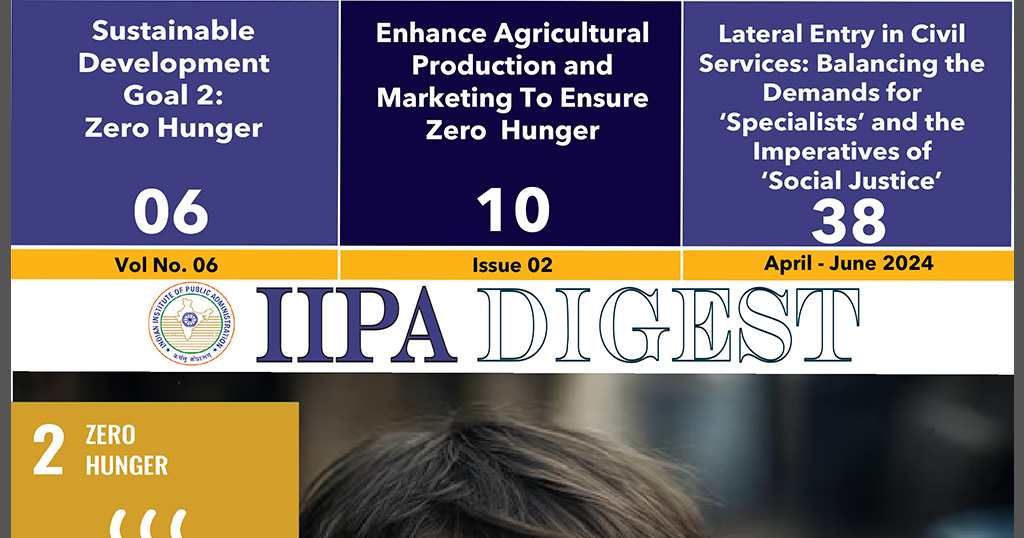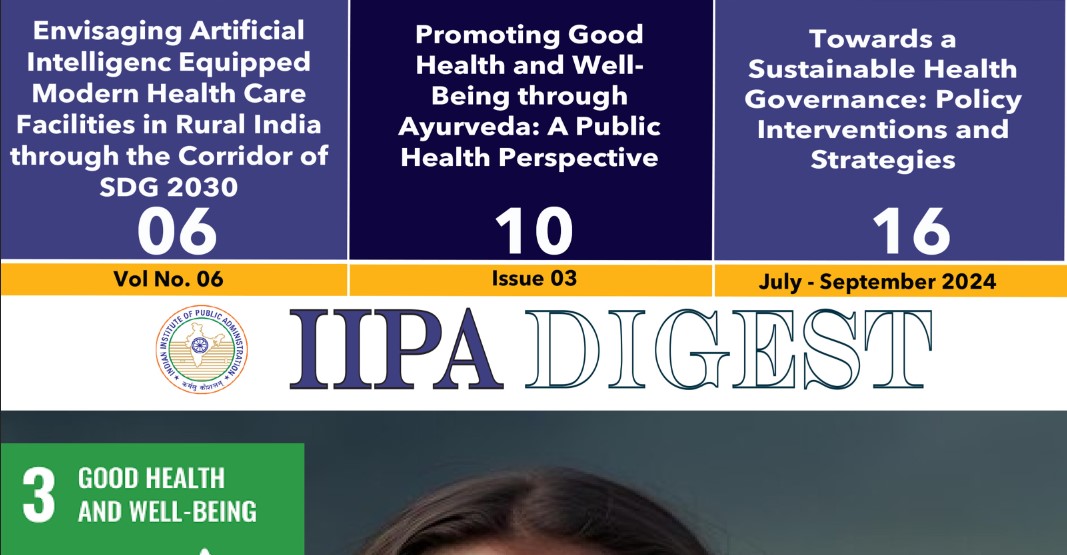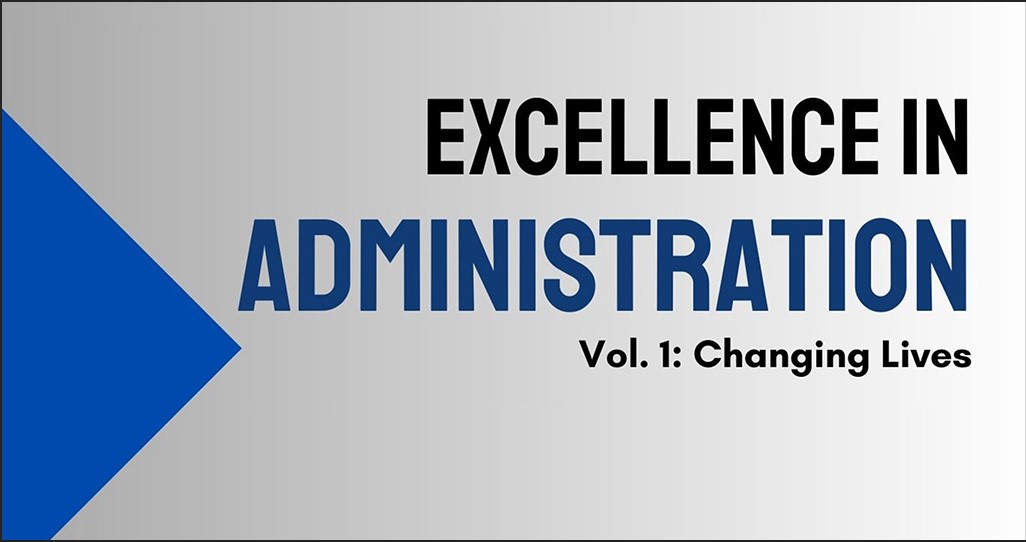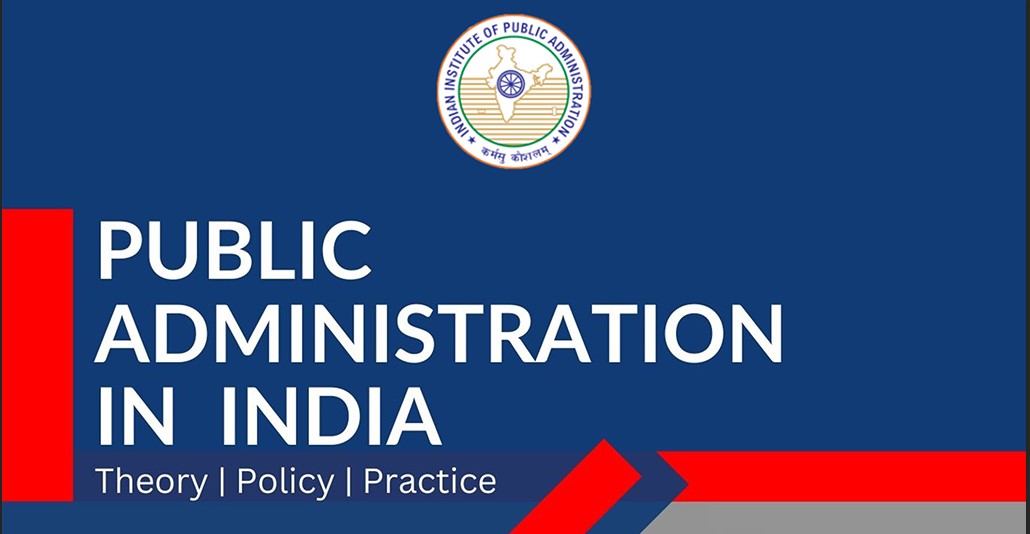Ease of Living
Introduction
“The ultimate purpose of governance is to make life easier for the governed.”
Thomas Jefferson
This sentiment lies at the heart of ease of living. The concept of ease of living has emerged as a vital yardstick to judge whether growth translates into better lives. It goes beyond GDP numbers, probing how easily a student reaches school, how safely a woman returns home at night, how affordably a family accesses water, healthcare and housing.
As Mahatma Gandhi observed, “The best test of good government is its ability to provide to the humblest the same opportunities as to the highest”.
In Public Administration, this principle finds modern expression in the concept of Ease of living a multidimensional measure of how effectively governance translates into safer streets, cleaner air, affordable housing and equitable opportunities. Public Administration, whether in Weber’s bureaucratic frame or in the participatory governance of today, ultimately seeks to enhance the lived experience of citizens. The concept of Ease of Living captures this essence it shifts the administrative lens from output to outcome, from the number of services delivered to the quality of life ensured.
Meaning
Ease of Living means the degree of comfort, convenience and dignity with which people can conduct their day-to-day lives. It reflects how smoothly citizens can access basic services, exercise their rights and pursue personal and professional goals without facing unnecessary hurdles. The idea is not limited to material prosperity it covers social well-being, safety, inclusivity and environmental sustainability.For example, a farmer being able to sell his produce directly in the market through a transparent digital platform without the interference of exploitative middlemen is a sign of improved ease of living. A student in a remote village who can attend online classes because of reliable internet connectivity experiences ease of living. An elderly person getting timely healthcare, a commuter reaching work quickly due to efficient public transport, or a citizen receiving government benefits directly in their bank account without corruption these all are practical manifestations of ease of living.
Ease of Living Index
The Ease of Living Index is an assessment tool developed by the Ministry of Housing and Urban Affairs (MOHUA) in India to evaluate the quality of life in urban areas.
The index is structured around three main pillars:
1. Quality of Life: This includes aspects like education, health, housing, sanitation and safety.
2. Economic Ability: This assesses the city’s economic opportunities and its ability to support its residents.
3. Sustainability: This evaluates the city’s environmental performance and its capacity for long-term growth.
• Citizen Perception:It is a crucial component, gathering feedback from residents on the services provided by the city administration.
The analysis conducted categorizes the cities into two parts:
A. Cities with a population of over 1 million;
B. Cities having a population of less than 1 million.
Top 10 Cities as per Ease of Living Index Report, 2025
In more than 1 million populated cities category, we have-
1. Bangalore (Karnataka);
2. Pune (Maharashtra);
3. Ahmedabad (Gujarat);
4. Chennai (Tamil Nadu);
5. Surat (Gujarat);
6. Navi Mumbai (Maharashtra);
7. Coimbatore (Tamil Nadu);
8. Vadodara (Gujarat);
9. Indore (Madhya Pradesh); and
10. Greater Mumbai (Maharashtra).
In less than 1 million populated cities category, we have-
1. Shimla (Himachal Pradesh);
2. Bhubaneswar (Odisha);
3. Silvassa (Dadra and Nagar Haveli);
4. Kakinada (Andhra Pradesh);
5. Salem (Tamil Nadu);
6. Vellore (Tamil Nadu);
7. Gandhinagar (Gujarat);
8. Gurugram (Haryana);
9. Davanagere (Karnataka); and
10. Tiruchirapalli (Tamil Nadu).
Ease of Living and Sustainable Development Goals (SDGs)
SDGs: They are a set of 17 global goals with 169 targets and 304 indicators adopted by the United Nations General Assembly as part of the 2030 Agenda for Sustainable Development. They are intended to address a variety of global issues such as poverty, inequality, climate change, environmental degradation, peace and justice, aimed to make the world more inclusive, equitable and sustainable.
Ease of Living Pillar Relevant SDGs
Quality of Life – Housing, health, education, safety, mobility SDG 1 (No Poverty), SDG 3 (Good Health), SDG 4 (Quality Education),
SDG 11 (Sustainable Cities)
Economic Ability – Income, employment, cost of living SDG 8 (Decent work), SDG 9 (Industry, Innovation), SDG 10 (Reduced
Inequalities)
Sustainability – Environment, energy, resilience SDG 6 (Clean Water), SDG 7 (Clean
Energy), SDG 12 (Responsible Consumption), SDG 13 (Climate Action)
Ease of Living: Major Indicators
Governance and Public Services
Governance is the backbone of ease of living. Citizens’ experiences depend on how responsive, transparent and efficient the government is.
Key governance aspects are:
• Citizen-Centric Administration: It places people at the core of governance, ensuring that policies and services are designed around their needs. Government initiatives like Digital India, UMANG (Unified Mobile Application for New-age Governance), Digi Locker and Direct Benefit Transfer have simplified access and reduced leakages. Transparency and accountability are promoted through Right to Information and social audits. Citizen participation is encouraged through MyGov platform, Gram Sabhas and Swachh Survekshan feedback.
• Decentralization: The 73rd and 74th Constitutional Amendments institutionalized Panchayati Raj Institutions and Urban Local Bodies, which directly handle water supply, sanitation, health, housing and livelihoods key determinants of Ease of Living. Through Gram Sabhas, e-Gram Swaraj and SWAMITVA scheme, citizens participate in decision-making and benefit from digitized records. Flagship programmes such as Swachh Bharat Mission, MGNREGA (Mahatma Gandhi National Rural Employment Guarantee Act), Smart Cities Mission and Atal Mission for Rejuvenation and Urban Transformation (AMRUT)are implemented largely through local governments.
• Digital Governance: It has simplified access to services, reducing bureaucratic hurdles and empowering citizens. The Digital India Mission (2015), along with JAM Trinity (linking the Jan Dhan Accounts, Aadhar Cards and Mobile numbers of citizens) and Direct Benefit Transfer has revolutionized welfare delivery by minimizing leakages. Platforms like UMANG, Digi Locker and GeM (Government e-Marketplace) enhance convenience and transparency, while UPI and BHIM promote financial inclusion.
Infrastructure
Infrastructure ensures accessibility, safety, convenience and dignity in citizens’ everyday lives. It includes physical, social, digital and energy infrastructure.
• Physical Infrastructure: It includes transport, housing, water, sanitation and urban services. Government schemes such as Pradhan Mantri Awas Yojana (housing for all), AMRUT & Smart Cities (urban amenities), Swachh Bharat (sanitation), Jal Jeevan Mission (tap water), Saubhagya (electricity), and Ujjwala (clean cooking fuel) have transformed household living standards. Connectivity projects like Bharatmala (to improve road connectivity), Sagarmala (Port development and connectivity), Metro expansion and UDAN (making air travel more accessible and affordable) improve mobility and reduce travel time.
• Social Infrastructure: It comprises of education, healthcare, skill development and social security. Government initiatives like Samagra Shiksha and PM e- Vidya (education), Ayushman Bharat, Health & Wellness Centres and Mission Indradhanush (healthcare), Skill India Mission and Pradhan Mantri Kaushal Vikas Yojana (skill development) empower citizens with knowledge, health and employability. Safety nets such as Mahatma Gandhi National Rural Employment Guarantee Act, National Food Security Act, PM Garib Kalyan Anna Yojana, pensions and insurance schemes provide economic security. Gender-focused programmes like Beti Bachao Beti Padhao and SHG initiatives foster inclusiveness.
• Digital Infrastructure: It is a key driver of ease of living. Initiatives like Aadhaar enable targeted delivery of subsidies through Direct Benefit Transfers, reducing leakages. Platforms such as Digi Locker, UMANG, MyGov and e-Sign bring government services to citizens’ fingertips. The JAM Trinity (Jan Dhan Aadhaar Mobile), UPI and Rupay have deepened financial inclusion. BharatNet and 5G rollout are bridging rural-urban divides, while e-Sanjeevani (telemedicine), PM e-Vidya and DIKSHA (enhancing school education through digital means) expand healthcare and education access.
• Energy Infrastructure: It includes electricity, cooking fuel and renewable energy systems. Schemes like Pradhan Mantri Sahaj Bijli Har Ghar Yojana (SAUBHAGYA) achieved near universal household electrification, while Deen Dayal Upadhyaya Gram Jyoti Yojana strengthened rural power supply. PM Ujjwala Yojana provided LPG connections. UJALA LED scheme promoted energy efficiency, lowering household costs. Rapid growth in solar, wind and hydropower align with India’s clean energy goals, while EV charging infrastructure and metro projects support green mobility.
Safety And Security
Safety and security include protection of life, property, rights and dignity of citizens, ensuring a climate where people can live without fear and with confidence in institutions.
Key aspects include:
• Law and Order: It forms the bedrock of ease of living by ensuring safety, justice and a climate of trust. Government initiatives such as the Criminal Tracking Network System, e-Courts Project, Fast track and special courts enhance transparency and quick response.
• Women’s Safety: Women’s safety is a core pillar of ease of living as dignity, mobility and freedom from fear are essential for inclusive development. The government has adopted several measures such as the Criminal Law Amendments (2013 & 2018) that strengthened provisions against sexual crimes; the Nirbhaya Fund supports CCTV, streetlighting and emergency response; Safe City Projects employ smart surveillance and women patrols; 112 emergency response support system and 181 helpline provide immediate assistance; and One Stop Centres offer integrated support to victims.
• Cybersecurity: In the digital age, ease of living is inseparable from cybersecurity. Cybersecurity protects citizens from financial frauds, identity theft, data breaches and cyberstalking, while ensuring reliable access to government services. Government initiatives include the National Cyber Security Policy, Indian Computer Emergency Response Team (CERT-In) for incident response, Cyber Surakshit Bharat for awareness, National Critical Information Infrastructure Protection Centre to protect critical infrastructure, Cyber Swachh Kendra for malware removal and schemes like Cyber Crime Prevention against Women and Children to safeguard women and children online.
• Disaster Safety: Ease of living is closely linked to safety from natural and man-made disasters, as disaster disrupt lives, livelihoods and essential services. The Disaster Management Act (2005) created National Disaster Management Authority (NDMA), State Disaster Management Authority (SDMA) and District Disaster Management Authority (DDMA) decentralizing mechanisms for preparedness and response. Initiatives like the National Disaster Management Plan, National Cyclone Risk Mitigation Project, and early warning systems by Indian Meteorological Department (IMD) and ISRO enhance resilience.
Housing and Urban Planning
Housing and urban planning are crucial determinants of ease of living. Adequate shelter provides dignity and security, while well-planned urban spaces ensure access to essential services, mobility and sustainable growth.
The government has undertaken various initiatives in this regard, such as:
• Pradhan Mantri Awas Yojana (Urban): A flagship mission of the Government of India being implemented by Ministry of Housing and Urban Affairs, it was launched in 2015. The mission addresses urban housing shortage among the EWS/LIG/MIG categories including the slum dwellers by ensuring a pucca house to all eligible urban households by the year 2022 which has been extended till 31st Dec, 2025.
• Smart Cities Mission: It was launched in 2015 to improve the quality of life in 100 cities focusing on providing efficient services, modern infrastructure and sustainable solutions while addressing key urban needs like housing, transport, education and healthcare by creating compact areas that serve as replicable models for other cities.
• Atal Mission for Rejuvenation and Urban Transformation (AMRUT): It was launched in 2015 in 500 selected cities across the country, covering across 60% of the urban population. The mission targets enhancing basic infrastructure and implementing urban reforms for selected cities, encompassing water supply, sewerage, drainage, green spaces, non-motorized transport and capacity building. Amrut 2.0 was launched in 2021, subsuming Amrut 1.0 till 2025-26.
• Metro Rail and Mass Rapid Transport Projects: With rapid urbanization, Indian cities face congestion, pollution and loss of productivity. These projects provide sustainable, safe and efficient solutions directly enhancing the quality of life. For instance, the Delhi Metro, carrying over 5 million passengers daily, has emerged as a global model of affordability, punctuality and safety.
Healthcare Accessibility and Education
Ease of living is not only about infrastructure and governance but also about access to basic human development needs. Both of these are central to improving quality of life, human dignity and opportunities for socio-economic mobility.
• Healthcare Accessibility: Healthcare is a fundamental pillar of ease of living. In India, with rapid urbanization, rising lifestyle diseases and demographic pressures, healthcare accessibility directly influences people’s quality of life. The government has launched several initiatives in this regard. Ayushman Bharat – PM Jan Arogya Yojana provides free insurance coverage to 50 crore people, while Health and Wellness Centres strengthen preventive and primary care. National Health Mission improves maternal and child health, and Mission Indradhanush enhances immunization coverage. Jan Aushadhi Kendras ensure affordable generic medicines, and the National Digital Health Mission is expanding telemedicine and e-health services.
• Education: Education not only enhances employability and income opportunities but also fosters awareness of rights, health and civic duties, thereby improving overall quality of life. The government has taken significant steps such as the Right to Education Act (2009) guarantees free and compulsory education for children aged 6- 14 years. Samagra Shiksha Abhiyan integrates school education from pre-primary to senior secondary. The Mid-Day Meal (PM POSHAN) scheme addresses classroom hunger. The National Education Policy (2020) introduces competency-based learning, vocational training and flexibility to prepare students for 21st century challenges. Digital initiatives like DIKSHA, SWAYAM and PM e-Vidya seek to bridge access gaps.
Environment
Environmental quality directly affects health, productivity and overall well-being. It enhances ease of living by ensuring clean air, safe drinking water, green spaces and resilience against disasters.
The environment shapes everyday life in multiple ways:
• Air Quality: It is a critical determinant of ease of living as it directly impacts human health, productivity and overall well-being. In India, rapid urbanization, industrialization and vehicular growth have made air pollution one of the gravest challenges to quality of life. The government has taken several measures to address the issue. The National Clean Air Programme aims to reduce particulate matter by 40% by 2026. The Graded Response Action Plan is implanted in Delhi NCR to curb seasonal pollution. Expansion of renewable energy, promotion of electrical vehicles, BS-VI emission standards, and afforestation drives under the National Green Mission also contribute to air quality improvement.
• Water Quality and Availability: Water is central to human survival, health and dignity, making its quality and availability a key determinant of ease of living. The government has launched several initiatives in this regard such as the Jal Jeevan Mission aims to provide piped water to all rural households; Namami Gange Programme focuses on river rejuvenation; and Atal Bhujal Yojana promotes community-based groundwater management. Further, wastewater treatment, rainwater harvesting and awareness campaigns are being promoted.
• Waste Management: With rapid urbanization and changing consumption patterns, India generates nearly 62 million tonnes of solid waste annually, of which only 30% is treated. The rest often ends up in open dumps leading to air, water and soil pollution, health hazards and reduced quality of life. Recognizing these, the government has undertaken several initiatives such as the Swachh Bharat Mission has improved sanitation coverage. Swachh Survekshan rankings encourage healthy competition among cities for better waste management practices. The Plastic Waste Management Rules aim to curb single-use plastics, while the Solid Waste Management Rules (2016) emphasize segregation, composting and recycling.
• Climate Resilience: As one of the climate-vulnerable countries, India faces rising temperatures, erratic monsoons, floods, droughts and cyclones which directly affect health, livelihoods and infrastructure. To address this, several measures have been undertaken such as the National Action Plan on Climate Change and State Action Plans to focus on renewable energy, sustainable agriculture and water management. Missions like the National Electric Mobility Mission, National Adaptation Fund on Climate Change and National Disaster Management Plan aim to build resilience. Internationally, India’s commitment to net-zero emissions by 2070 and leadership in the International Solar Alliance demonstrate proactive engagement.
Economic Opportunities
Economic opportunities enhance ease of living by ensuring financial security, reducing poverty and enabling access to better healthcare, housing and education.
Following are some of the government initiatives for enhancing economic opportunities:
• Rural Livelihoods: Agriculture focused schemes like PM-KISAN, PM Fasal Bima Yojana and Soil Health Cards support farmers. The Mahatma Gandhi National Rural Employment Guarantee Act (MGNREGA) provides wage employment and boosts rural infrastructure. Simultaneously, the National Rural Livelihood Mission (NRLM) empowers women through self-help groups and promotes microenterprises.
• Entrepreneurship: By creating jobs, fostering innovation and delivering affordable goods and services, entrepreneurs directly improve quality of life for citizens. The government has recognized this potential and launched several initiatives. Start-up India and Stand-up India provide funding support, tax benefits and incubation. PM Mudra Yojana enables micro and small entrepreneurs to access credit without collateral. While initiatives like Atal Innovation Mission promotes innovation among students and start-ups.
• Skill Development: In a country where nearly 65% of the population is below 35 years of age, the ability to acquire relevant skills directly impacts employability, income security and overall quality of life. The Government of India has launched multiple initiatives to strengthen this ecosystem. The Skill India Mission (2015) aims to train millions through programs like Pradhan Mantri Kaushal Vikas Yojana, focusing on industry-relevant skills. The Deen Dayal Upadhyaya Grameen Kaushal Yojana addresses rural youth, while National Apprenticeship Promotion Scheme fosters on-the-job training.
Social Equality
While infrastructure, governance and economic growth are important, the true measure of ease of living lies in whether all sections of society enjoy equal rights, opportunities and access to services. Without social equality, ease of living becomes a privilege for a few rather than a reality for all.
The Indian state has made significant efforts to promote social equality through constitutional provisions like:
• Article 14: Equality before law and equal protection of laws.
• Article 15 & 17: Prohibition of discrimination and abolition of untouchability
• Article 16: Equality of opportunity in public employment
• Directive Principles of State Policy: Promote social and economic democracy
• Reservation Policies: Ensuring representation of Scheduled Castes, Scheduled Tribes, OBCs and economically weaker sections
• Laws like Right to Education, MGNREGA, Protection of Civil Rights Act further ensure equality in practice.
Major Achievements with Regard to ease of Living as per Government Reports
Serving the Poor and Honouring the Marginalized at the Heart of Governance
81 crore people have been receiving free food grains under the PM Garib Kalyan Anna Yojana, while over 12 crore toilets have been built under Swachh Bharat.
15 crore households now have tap water connections, and more than 4 crore homes have been completed under Pradhan Mantri Awas Yojana.
Over 52 crore loans have been given under the Mudra Yojana, 68 lakh street vendors were supported through PM SVANidhi, and 20 crore women received cash transfers during the Covid lockdown.
Notably, 60 percent of current ministers are from SC, ST or OBC communities, and 112 aspirational districts have shown development progress above the state average.
Ensuring farmer welfare: Investing in the backbone of India’s economy
The agriculture budget in 2025-26 rose to five times its 2013-14 levels.
Nearly 25 crore soil health cards have been distributed to promote scientific farming practices.
Under the PM Kisan scheme, Rs. 3.7 lakh crore has been disbursed directly to farmers, while over 1.75 lakh crore has been settled under PM Fasal Bima Yojana.
Procurement at Minimum Support Price (MSP) has seen a 7,350 percent rise for pulses and 1,500 percent for oilseeds.
Infrastructure support has also increased – Rs 1 lakh crore has been disbursed through the Agriculture Infrastructure Fund, and 1,473 mandis have been linked through eNAM to streamline produce marketing.
New Momentum for Nari Shakti
For the first time, India has recorded a sex ratio of 1,020 women per 1,000 men (National Family Health Survey- 5)
Under the Pradhan Mantri Matru Vandana Yojana (PMMVY), Rs. 18,593 crores have been distributed to 3.98 crore pregnant and lactating women.
The Ujjwala Yojana has enabled over 10.33 crore households to shift to smoke-free kitchens, improving women’s health.
Paid maternity leave was extended from 12 to 26 weeks.
Over 35 crore Mudra loans amounting to Rs 14.72 lakh crore have been given to women, accounting for 68 percent of the total disbursement.
Additionally, 10 crore women have been brought into more than 90 lakh Self Help Groups, while the government has pledged to support 3 crore women in becoming “Lakhpati Didis”.
Building A Future-Ready Generation
The National Education Policy (NEP), introduced after more than 30 years has laid the foundation for a more flexible, modern learning environment.
Over 1.6 crore individuals have been trained under the PM Kaushal Vikas Yojana.
In the startup ecosystem, more than 1.6 lakh startups have been officially recognized, generating 17.6 lakh+ jobs.
In the realm of education infrastructure, 14,500 schools are being modernized under the PM Schools for Rising India (PM SHRI) scheme; 7 new IITs and 8 new IIMs have been added, bringing their total to 23 and 21 respectively.
The number of AIIMS has tripled, and 2,045 medical colleges (including allopathy, dental and AYUSH) are now operational.
The government has also focused on sports through the TOPS (Target Olympic Podium Scheme), supporting 94 athletes in the core group and contributing to India’s rising medal tally in global events.
Rapid Growth in Infrastructure
• Road transport and highway budgets saw a massive 570% surge between 2014 and 2023-24, while the rural road network now covers 3.96 lakh km with 99% connectivity.
• The speed of highway construction has climbed to an impressive 34 km/day.
• Railways too witnessed a nine-fold budget hike, facilitating the launch of 400 Vande Bharat trains.
• Urban mobility progressed with metro rail networks growing from 248 km in 2014 to 1,013 km in 2015.
• Additionally, 86 airports have been operationalized and over 3,600 km of high speed corridors have been built in the last five years, underscoring the government’s focus on building infrastructure at an unprecedented scale and pace.
Nation First
The success of Operation Sindoor and Operation Kaveri reflected a resolute and sovereign nation prioritizing the safety of its citizens worldwide.
Defence exports surged to Rs 23,622 crore in 2024-25, alongside a 34-fold rise since 2014.
Strategic decisions like the removal of Article 370 and 35A and the conversion of the Ordnance Factory Board into seven PSUs, six of which are profitable, demonstrate a robust defence posture.
India Becoming the Economic Powerhouse
India has emerged as a global economic powerhouse, with FDI jumping to $42 billion, crossing $1 trillion cumulatively.
India leads in real-time digital transactions (49 percent globally) and is projected to be the fastest growing major economy.
The Production Linked Incentive (PLI) scheme generated Rs 14 lakh crore in output and 11.5 lakh jobs.
With Non-Performing Assets (NPAS) down to 2.6 percent and MSMEs receiving over Rs 3.68 lakh crore, India’s robust, tech-driven and inclusive growth is reshaping the global economic landscape.
India has significantly improved its ease of doing business, rising 79 ranks between 2014 and 2019.
Over 1.8 lakh new companies were registered in 2023-24, supported by tax reforms, labor code simplifications and the repeal of archaic laws.
Digital Revolution
With 116 crore mobile subscribers and 6.93 lakh km of optical fibre laid under BharatNet, the country’s connectivity push is unprecedented.
Over 2.14 lakh gram panchayats are now connected via fibre, and 5.76 lakh Common Service Centres are operational under Digital India.
Affordable internet has become a reality, with data prices dropping from Rs 308 per GB to just Rs 9.34.
Meanwhile, the UPI ecosystem hit Rs 24 lakh crore in transactions in April 2025 alone, accounting for 49 percent of global real-time digital payments.
Issues/Challenges With Regard to Ease of Living in India
In India, despite notable progress through various initiatives several challenges persist such as:
• As India strides towards modernization and globalization, it is leaving behind millions of people living in slums for whom the promise of development has no meaning. The last comprehensive slum census in India was conducted in 2011. It showed 65 million people lived in slums across urban areas which is often characterized by overcrowding, poor housing structures, lack of sanitation, clean drinking water and proper waste management.
• Of the world’s 30 cities with the worst air pollution, 17 are in India. The capital, New Delhi, has the poorest air quality among capital cities globally, with concentrations of particulate matter (PM 2.5) nearly 10 times higher than the World Health Organization guidelines. The effects are devastating. Air pollution accounts for more than 2 million deaths a year in India, according to the State of Global Air 2024.
• In India, out-of-pocket health expenditure expenses account for about 62.6% of the total health expenditure, one of the highest in the world. As per a report, only 11% of sub-centers, 13% of primary health centers and 16% of community health centers meet Indian Public Health Standards. The Rural Health Statistics Report shows that there is a shortfall of more than 80% of the required surgeons and pediatricians in the 6,064 community health centers across the country.
• India’s education system is struggling, with the ASER report revealing that 76.6% of class 3 students are unable to read a class 2-level text. Public education spending remains at 4.6% of GDP, falling short of the 6% target set by National Education Policy (NEP), 2020. States like Bihar, Uttar Pradesh and Maharashtra have the highest dropout rates.
• According to the World Inequality Database findings, India’s top 1% now possesses 40.1% of the nation’s wealth, exceeding the wealth held by colonial elites during British rule. In stark contrast, the bottom 50% hold a mere 6.4%. While India is one of the fastest growing economies in the world, it is also one of the most unequal countries.
• India Business Corruption Survey, 2024 presents a troubling picture where 66% of business entities admit to paying bribes, with 54% were coerced for approvals. The Transparency International “Global Corruption Barometer – Asia” reported India’s highest bribery rates (39%) and use of personal connections (46%) for public services.
• Women’s safety remains a significant concern in India, with high crime rates reported against women. According to the National Crime Report Bureau (NCRB) report, crimes against women increased by 12.9% between 2018 and 2022. As per the Women Peace and Security Index 2023, India ranks 128 out of 177 countries in terms of women’s inclusion, justice and security. Further, many women face societal pressure that discourages them from reporting crimes.
• India faces a significant digital divide, with urban areas having much higher internet and computer access than rural areas. For instance, in 2024, a report noted 66% urban internet penetration versus 24% rural access. The gap is also evident across socio-economic groups, with the poorest households and communities like Scheduled Castes/Tribes having notably lower access.
Suggesstions/Way Forward
Strengthening Governance and Service Delivery: Decentralization should by promoted by empowering local governments for effective last-mile delivery. Also, a single-window system with time-bound service delivery laws will make public services more accessible. Capacity building of institutions and continuous training of officials can improve efficiency. Similarly, feedback mechanisms such as citizen report cards and social audits would enhance accountability and responsiveness.
Affordable Housing: Low-cost housing projects should be expanded with green and sustainable designs while effectively implementing rental housing policies for migrants and urban workers. Inclusive urban planning can be done by integrating affordable housing with transport, education and healthcare facilities to prevent creation of isolated slums. In addition, land acquisition should be simplified, approval delays be reduced and transparent land records must be promoted.
Environmental Sustainability: To improve environmental sustainability, stricter air quality norms must be enforced, public transport should be expanded and electric mobility should be encouraged to reduce urban pollution. Effective solid waste management with segregation at source and waste-to-energy initiatives can reduce landfills. Moreover, building climate resilience through disaster-ready infrastructure and early warning systems is essential.
Quality Healthcare and Education: Greater investment in public health spending should be done while expanding primary health infrastructure. Also, preventive healthcare through awareness on nutrition, sanitation and lifestyle diseases must be emphasized. In education, priority should be given to improving public schools, teacher training and digital learning platforms. Skill development programs aligned with industry needs can enhance employability. Special attention must be given to bridging gender, rural-urban and digital divides in education.
Economic Empowerment: To enhance employment, large-scale investment should be made in labor-intensive sectors like textiles, tourism, agro-processing and construction. Focus should be on promoting MSMEs, startups and entrepreneurship through easier credit access, tax incentives and reduced compliance burdens. Stronger industry-academia linkages, apprenticeships and on-the-job training can bridge the employability gap. Emphasis should be on digital skills, green jobs and vocational training, especially for youth and women.
Safety and Security: Women’s security must be improved through effective policing, CCTV surveillance in public spaces, fast-track courts for crimes against women and awareness campaigns. For law and order, police modernization, better training and use of predictive policing with technology are crucial. In terms of digital safety, robust cybersecurity frameworks, awareness drives and strict enforcement of data protection laws are necessary. Social security measures like pensions, health insurance and unemployment support also contribute to a sense of safety.
Citizen Participation: It is vital for ease of living as it ensures that governance is inclusive, transparent and responsive to people’s real needs. To strengthen citizen engagement, government policies must engage participatory planning through Gram Sabhas, Ward Committees and online consultation platforms. Social audits, citizen report cards and community scoreboards should be institutionalized to assess the quality of public services. Involving citizens in environmental initiatives like waste management, water conservation and urban planning can create ownership and accountability.
Conclusion
Ease of living is the soul of governance it transforms schemes into services, promises into possibilities and growth into well-being. It goes beyond economic indicators to encompass dignity, accessibility, equality and well-being in everyday life. In India, ensuring ease of living requires strengthening governance, simplifying service delivery, expanding social security, providing quality healthcare and education, promoting affordable housing, creating sustainable livelihoods and safeguarding environmental resources. Equally important are safety, inclusivity and active citizen participation, which build trust in institutions and foster a sense of belonging.
The path ahead lies in integrating technology with good governance, empowering local bodies for last-mile delivery and aligning initiatives with the Sustainable Development Goals (SDGs). By adopting a citizen-centric, transparent and sustainable development model, India can transform its demographic dividend into human capital, bridge inequalities and create a society where prosperity is shared.
Ultimately, the success of India’s democracy will not be measured by the tallest skyscrapers or fastest GDP growth, but by the simplest measure of all how easily, safely and meaningfully its people live their lives.
Leave a comment
More articles from Governance & Polity
